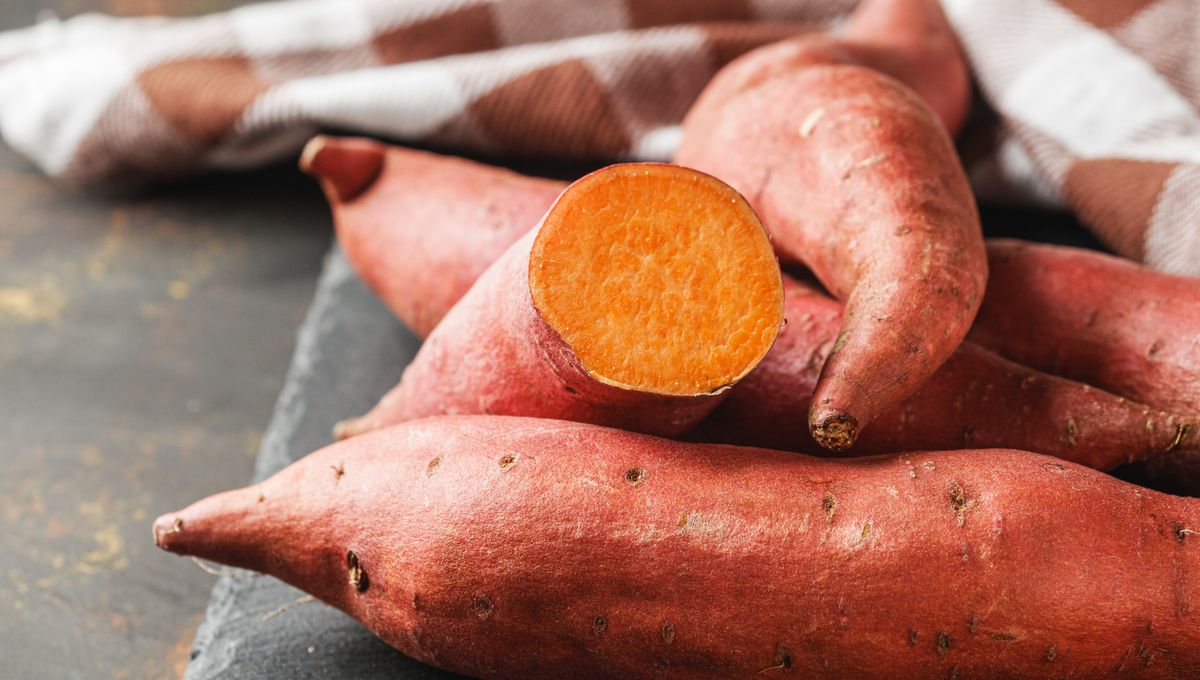
Of all the myriad weird and wonderful species that populate this planet, it’s probably not the humble sweet potato that you’d pick as being the most mysterious. It may surprise you, therefore, to learn that it’s only now, in September 2025 of the Common Era, that scientists have decoded its genome – meaning we finally know exactly what kind of vegetable it actually is.
Now, we know what you’re thinking: who cares? But sweet potato is, in fact, a globally important crop. It’s extremely resilient, surviving in extreme climates and having so few natural predators that farmers rarely need to bother with pesticides. They’re the most efficient staple food to grow – they offer around 70 kilocalories per hectare of farmland per day – which makes them invaluable in food-insecure places like those in sub-Saharan Africa.
We could probably do better than that – after all, we’ve already created things like protein-rich potatoes and, you know, any and all bananas – but not without disentangling the tuber’s genome. The problem, though, is that the sweet potato’s genetic makeup is incredibly complex: it has six sets of chromosomes – for comparison, we have two – and its genome is basically a puzzle constructed from pieces of many different ancestors, only some of which we’ve even identified.
That makes decoding the vegetable much more difficult than other staple crops. “In wheat […] ancestral contributions can be found in distinct genome sections,” said Shan Wu, a researcher at Cornell University’s Boyce Thompson Institute and first author of the new paper, in a statement this week. In contrast, “in sweet potato, the ancestral sequences are intertwined on the same chromosomes, creating a unique genomic architecture.”
Nevertheless, using cutting-edge DNA sequencing techniques, the team were able to create the first ever complete genetic makeup of the tuber – or at least, one variety of it. Focusing on the “Tanzania”, a type of sweet potato prized for its abundance and disease resistance, the team successfully separated, or “phased”, the 90 chromosomes of the vegetable into the original six sets, or haplotypes.
“Having this complete, phased genome gives us an unprecedented level of clarity,” explained Zhangjun Fei, a professor at the Boyce Thompson Institute and lead researcher on the project. “It allows us to read the sweet potato’s genetic story with incredible detail.”
And the answer to the enigma that is the sweet potato? It turns out the vegetable is a “segmental allopolyploid” – a fancy term meaning a hybrid from multiple species which nevertheless behaves genetically as if it came from just one. It’s a description that invokes the tuber’s inner mishmash of genetic material – a history of genomic merging and recombination, the researchers explain, that’s likely responsible for the vegetable’s incredible hardiness and adaptability.
“The sweet potato’s six sets of chromosomes also contribute to its enhanced resilience,” noted Fei. “With multiple versions of important genes, the plant can maintain backup copies that help it survive drought, resist pests, and adapt to different environments – a feature known as polyploid buffering.”
With this hero crop now decoded, researchers are one step closer to being able to improve it even further, pinpointing genes responsible for high yield, nutritional content, resistance to disease, and so on.
Of course, more than one variety will need to be analyzed before that’s truly possible – but eventually, the techniques pioneered in this study may be used not only to understand the sweet potato, but also other staples. Wheat, cotton, and bananas, for example, might be next – with multiple sets of chromosomes, all three are likely hiding a whole lot of untapped potential.
The study is published in the journal Nature Plants.
Source Link: First Sweet Potato Genome Reveals They’re Hybrids With A Puzzling Past And 6 Sets Of Chromosomes